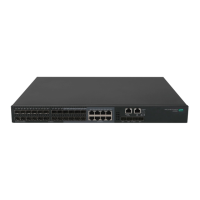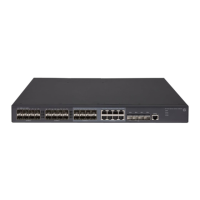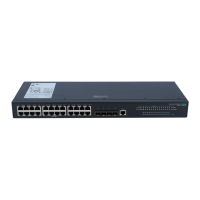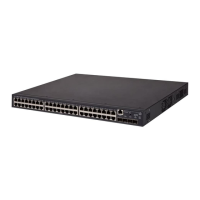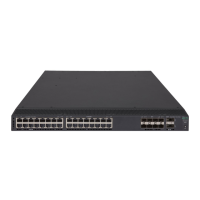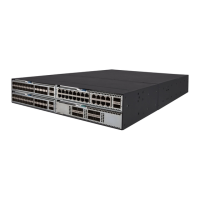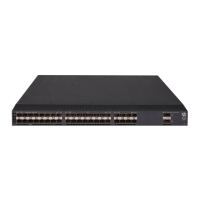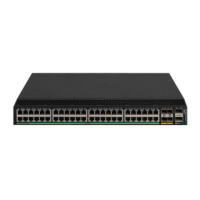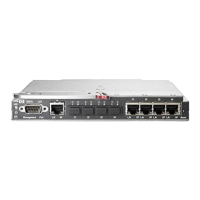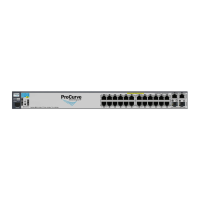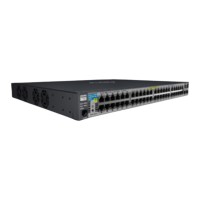182
{ If the system fails to apply the configuration to the aggregate interface, it stops applying the
configuration to aggregation member ports.
{ If the system fails to apply the configuration to an aggregation member port, it skips the port
and moves to the next member port.
Examples
# Configure GigabitEthernet 1/0/1 as a trunk port, and assign it to VLAN 2, VLAN 4, and VLANs 50
through 100.
<Sysname> system-view
[Sysname] interface gigabitethernet 1/0/1
[Sysname-GigabitEthernet1/0/1] port link-type trunk
[Sysname-GigabitEthernet1/0/1] port trunk permit vlan 2 4 50 to 100
Related commands
port link-type
port trunk pvid
Use port trunk pvid to configure the PVID for a trunk port.
Use undo port trunk pvid to restore the default.
Syntax
port trunk pvid vlan vlan-id
undo port trunk pvid
Default
The PVID of a trunk port is VLAN 1.
Views
Layer 2 Ethernet interface view, Layer 2 aggregate interface view
Predefined user roles
network-admin
Parameters
vlan-id: Specifies a VLAN by its ID in the range of 1 to 4094.
Usage guidelines
You can configure a nonexistent VLAN as the PVID of a trunk port. When you delete the PVID of a
trunk port by using the undo vlan command, the PVID setting of the port does not change.
For correct packet transmission, configure the same PVID for a local trunk port and its peer.
To enable a trunk port to transmit packets from its PVID, you must assign the trunk port to the PVID
by using the port trunk permit vlan command.
• The configuration made in Layer 2 Ethernet interface view applies only to the port.
• The configuration made in Layer 2 aggregate interface view applies to the aggregate interface
and its aggregation member ports.
{ If the system fails to apply the configuration to the aggregate interface, it stops applying the
configuration to aggregation member ports.
{ If the system fails to apply the configuration to an aggregation member port, it skips the port
and moves to the next member port.
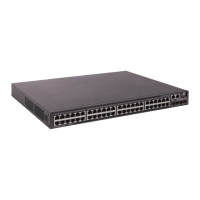
